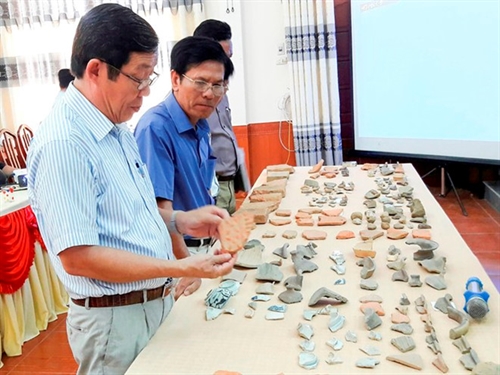 Life & Style
Life & Style

The Centre of Heritage Preservation and the museum of the central province of Quảng Trị has recently announced in a press conference the results of excavations in the Nguyễn Lords’ chief town.
 |
| Lordly relics: A variety of artifacts, mainly bricks, tiles, terracotta and porcelain items that can be dated back to between the 15th and 19th centuries have been discovered in the recent excavation of the Nguyễn Lords’ chief town. — Photo toquoc.vn |
QUẢNG TRỊ — The Centre of Heritage Preservation and the museum of the central province of Quảng Trị has recently announced in a press conference the results of excavations in the Nguyễn Lords’ chief town.
The excavation has unearthed a variety of artifacts, mainly bricks, tiles, terracotta and porcelain items that can be dated back to between the 15th and 19th centuries. Many of the antiques discovered were sophisticated and used by the noble classes.
Conducted at a 113sq.m field in Trà Liên Tây Hamlet, Triệu Giang Commune in Triệu Phong District from July 20 to August 2, the excavation is significant in the province’s research of historical and scientific facts contributing to knowledge about the Nguyễn Lords (1558-1626) within the district.
The archaeologists agreed that the results prove that the Nguyễn Lords’ chief town was comprised of many brick-tiled buildings and surrounded by the citadel.
“To clarify the scale and structure of the citadel further research is required and authorities would have to approve the investment for creating the scientific and legal foundations of a project to preserve the relics found,” said Associate Professor Đỗ Bang at the press conference.
According to historical documents, the imprint of Nguyễn Hoàng (1525–1613), the first of the Nguyễn Lords, could be found in Quảng Trị Province. Opposing his administration of the newer provinces, he chose Ái Tử, currently Triệu Phong District, as his first chief town. In 1570, he moved his palace to Trà Bát Village, and then to Dinh Cát, which was considered as one of 12 palaces in southern Việt Nam, in 1600. — VNS




